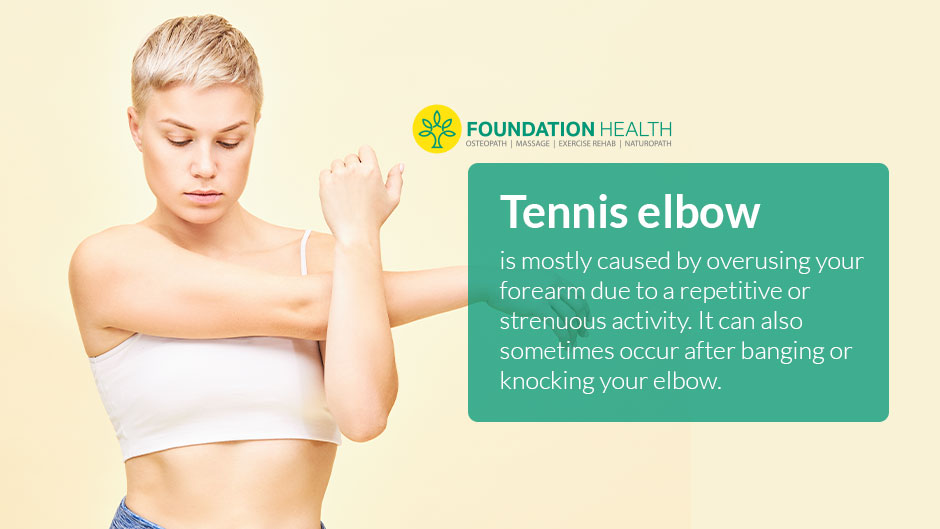Is tennis elbow a problem for you? If so, you’re not alone.
Tennis elbow is a common injury that can happen to anyone who participates in repetitive motions using their forearms, hands, and wrists. The pain usually starts slowly after performing an activity involving these movements for an extended period of time.
However, if left untreated it can get worse with each repetition, making it difficult to carry out even the simplest activities without experiencing some degree of discomfort or pain.
Fortunately, there are treatments available that will help decrease your symptoms and allow you to resume your normal life!
What is tennis elbow?
The name “tennis elbow” is often used when describing a painful condition that often occurs at the lateral epicondyle on the outer side of your arm or on both sides.
This can happen when you have repetitive motions involving gripping, pinching, bending over or twisting movements with your wrist extended outwards.
These repeated movements will irritate an already vulnerable tendon within your forearm muscles which then leads to inflammation and pain around this area. It may feel like there’s an electric shock sensation running down into your fingers.
Tennis elbow typically develops slowly and may feel like a dull ache or sharp pain on the outside of your arm which gets worse with activity and better after rest.
This condition has been known for decades and is well-known among doctors and osteopaths as lateral epicondylitis.
What causes tennis elbow?
Overusing a muscle group while not allowing full recovery can cause pain to be felt in this area over time. The repeated movements from the previous condition can also put pressure on your tendons which will result in inflammation and discomfort.
In some cases, it has been known for other conditions such as arthritis to arise which can further increase stress on tendons.
Bony abnormalities can also put strain on these tendons, causing pain to occur around the elbow.
The wrist extensor muscles are often weakened beforehand which increases your chance of developing tennis elbow.
Common symptoms of tennis elbow
- Pain when gripping objects, performing activities where weight is added to the forearm (example handstands), or resisting wrist/finger extension.
- Poor grip strength.
- An aching elbow when not in use.
- Pain when stretching the forearm muscles.
- Increased symptoms when forearms are used.
- Tenderness on the outside of the elbow.
Why does tennis elbow hurt more at night?
Most people find that it hurts the most during the night and first thing in the morning. This occurs since the muscles and tendons stiffen during sleep when we’re immobile and blood circulation is lower. Once you get up in the morning and move your arm, this stiffness can aggravate the pain.
What is the best treatment for tennis elbow?
As you would expect any kind of pain reliever will help ease the discomfort such as anti-inflammatory medication, rest, or ice therapy.
You should also look at how you are performing your exercises or other activities that are causing this painful condition. If you are doing the same activity daily then it may be time to take a break for a while to let your body heal.
However, if the pain isn’t resolved with rest and over-the-counter medication, you should see an experienced osteopath at Foundation Health for an accurate diagnosis and more advice.
There are many effective treatments for tennis elbow that can be used to help you get the treatment you need, including osteopathic treatment.

Can an osteopath help with tennis elbow?
Tennis elbow usually responds well to osteopathic manipulative therapy with gentle mobilisation.
Gentle manipulation is then often applied by an osteopath with your muscles and tendons being relaxed through stretching and massage.
Osteopathic treatment will help ease the pain, increase movement and restore muscle strength and function, with little discomfort.
This can then be followed up with a home exercise program to continue improving your condition from home.
Osteopathic treatment for tennis elbow is the most common form of effective treatment as it helps to reduce pain and improve muscle function without surgery, injections, or medication.
Most people recover from tennis elbow but symptoms can become worse if you don’t rest from the activity that is causing your symptoms as this will lead to more damage and pain.
Final thoughts
Tennis elbow is a common condition that involves the inflammation of the tendons at the medial epicondyle on your elbow.
This is a common injury among athletes which can result from overuse or have an underlying cause such as arthritis.
People often describe feeling pain along the outside of their elbows and a sharp, aching sensation.

